Three marriage proposals, 40 punctured tires (and 10 new ones), close encounters with poisonous snakes and brown bears, four grueling sea crossings, 12 countries and 7,800 kilometers traversed—and she’s not even half way home.
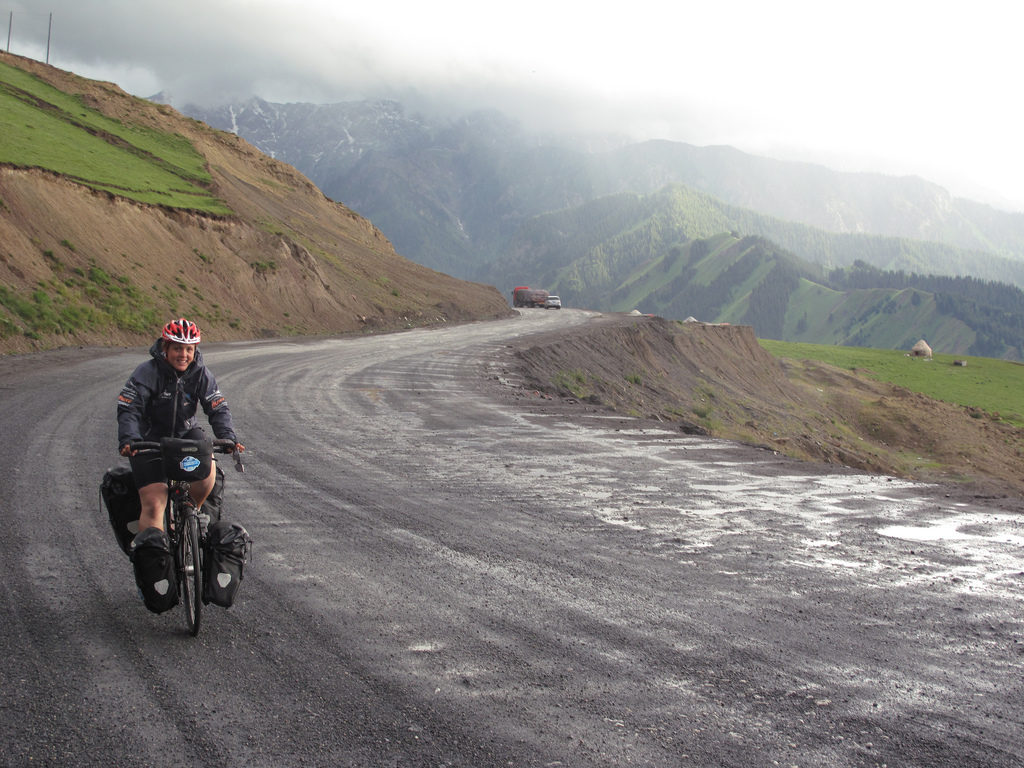
All great journeys begin with a single step, or in my case a stroke. On April 1, 2011, I put my kayak into the river at Tower Bridge, London, and paddled down the River Thames, then across the English Channel to Calais, France. From the bridge to the beach it was 60 hours and 110 nautical miles.
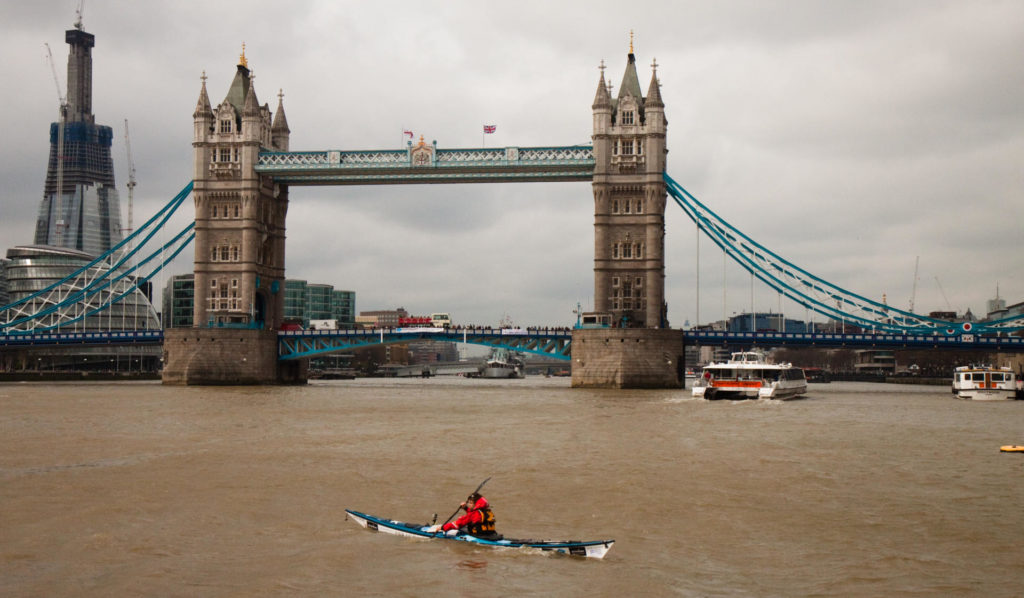
It was challenging as my partner and I paddled with the tides—on and off the water every six hours. A worsening weather window meant there was no time to rest before the crossing to France; we left at 10 p.m. and paddled through the night in rough seas, battling to stay awake.
Arriving in France, I swapped boat for bike and headed east alone. I passed through what felt like familiar territory as I crossed Europe and then into less recognizable Asia. Here there were the empty plains of Kazakhstan and the scorching Gobi Desert of Northern China. From Beijing, I turned left and headed north to the Russian border, chilly and forested.
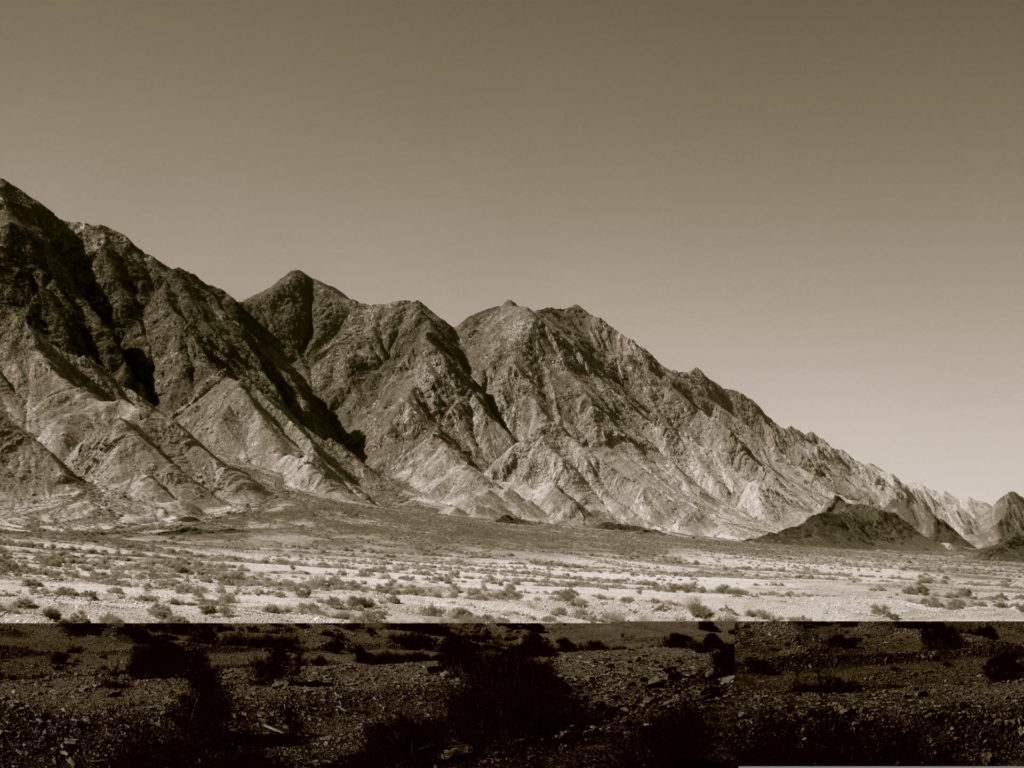
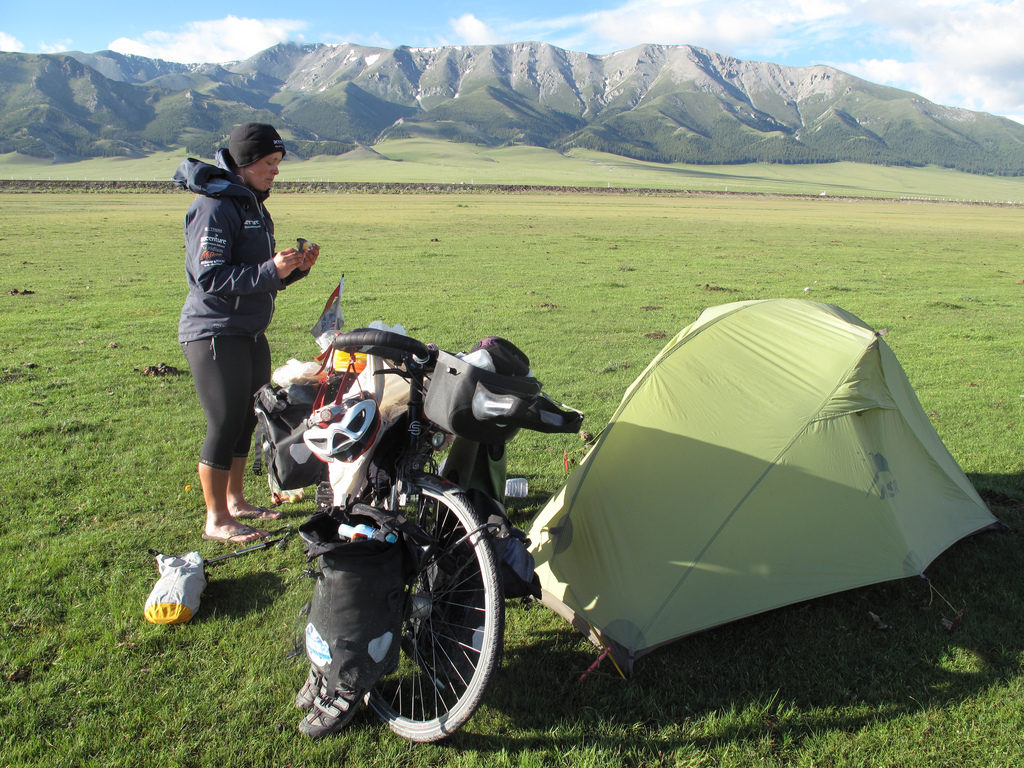
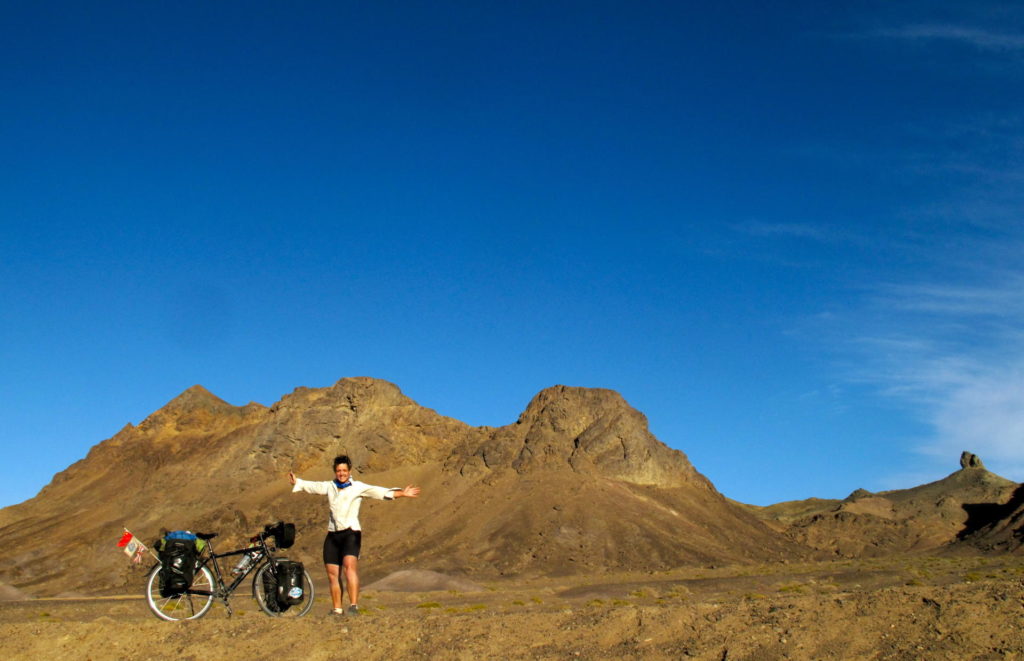 After nearly six months of cycling, my body was shocked to get back on the water and my mind was a bit confused as well. Using a mixture of kayaking and biking, I traveled from mainland Russia into Japan via the rugged and beautiful island of Sakhalin from which I paddled to Hokkaido.
After nearly six months of cycling, my body was shocked to get back on the water and my mind was a bit confused as well. Using a mixture of kayaking and biking, I traveled from mainland Russia into Japan via the rugged and beautiful island of Sakhalin from which I paddled to Hokkaido.
The pressure was on to arrive safely in Honshu before the winter weather arrived in full force on Japan’s northern island. I was pushing my limits mentally and physically until I made it to Oma, Aomori Prefecture.
Arriving on Japan’s main island was a huge moment. I could relax now a little and take my time pedaling south to Choshi, the coastal town at the mouth of the Tone River in Chiba Prefecture, where I will start rowing from again next spring, and finally to Tokyo. Then I can finally unclip my pedals and rest as this year’s leg of my human-powered world expedition is complete.
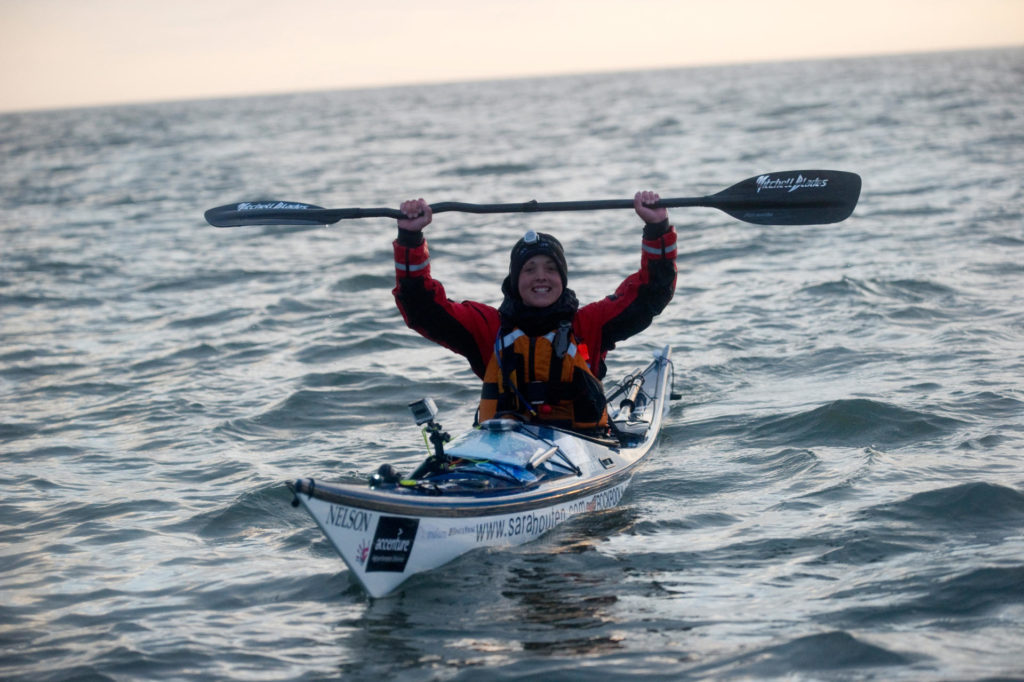
Why am I doing this?
Simply, I love adventures, challenging myself in extreme environments and traveling through wild places. In 2009, I rowed across the Indian Ocean, a voyage that took me four months from Australia to Mauritius. I became a creature of the ocean, in tune with the rhythms and changes in weather, and I especially enjoyed being so close to nature. Experiencing life at a human-powered pace is, for me, simply wonderful.
I decided while rowing I wanted to make an even bigger journey—one which would take me out to sea again and across the green bits of the globe, too. An important part of my journey is sharing it with the world, especially children. As such, I have a dedicated education section on my Website with resources for students, as well as connecting with schools live via my satellite phone. I plan to have the resources translated into Japanese in the future.
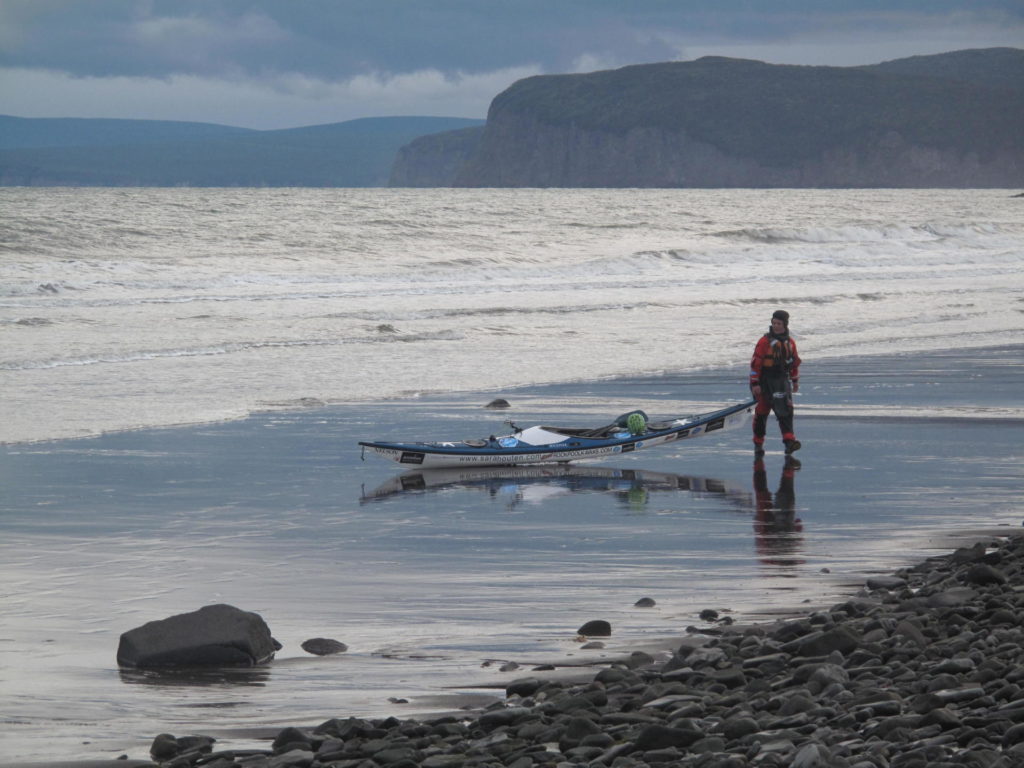
Cycling through Japan
I whizzed through Hokkaido in just six days, so my impressions were rather blurred by fatigue and a focus of getting to Honshu. However, I have really enjoyed taking my time weaving my way south, particularly savoring the Towada-Hachimantai National Park and lake swims in Tawada-ko (Aomori) and Tazawa-ko (Akita). After the chilly climes of Russia, the water felt tropical.
Heading southeast, I then pedaled to the Tohoku coast and was humbled by what I found. News reports are one thing, but visiting Ishinomaki and seeing for myself the devastation and reconstruction efforts was very moving. I stood looking out to sea, calm and inviting, and was humbled by the power and anonymity of nature that had claimed so many lives and altered the landscape so drastically.
I am planning to join a volunteer work party next month further up the coast, to help in a small way, and I hope to make a return visit to Ishinomaki to see if I can be of use in any of the schools.
Smooth roads and lots of wild camping spots have made Japan a very easy place in which to cycle—and the scenery, lakes and lovely people have made it a real pleasure. Autumn seems a perfect time for cycling in the north, with mild weather and gorgeous colors of turning leaves. I was surprised there were not more touring cyclists.
What lies ahead…?
The greatest challenge of the journey lies ahead; the Pacific Ocean will be grueling. I am preparing to be at sea for up to seven months, although I hope to cross in five. I am excited about returning to the water and am looking forward to my preparations over the winter. From the east coast of the Pacific I will cycle across the USA and Canada in the winter before rowing home across the North Atlantic. I hope to be home in September of 2013, my loop of the globe complete.
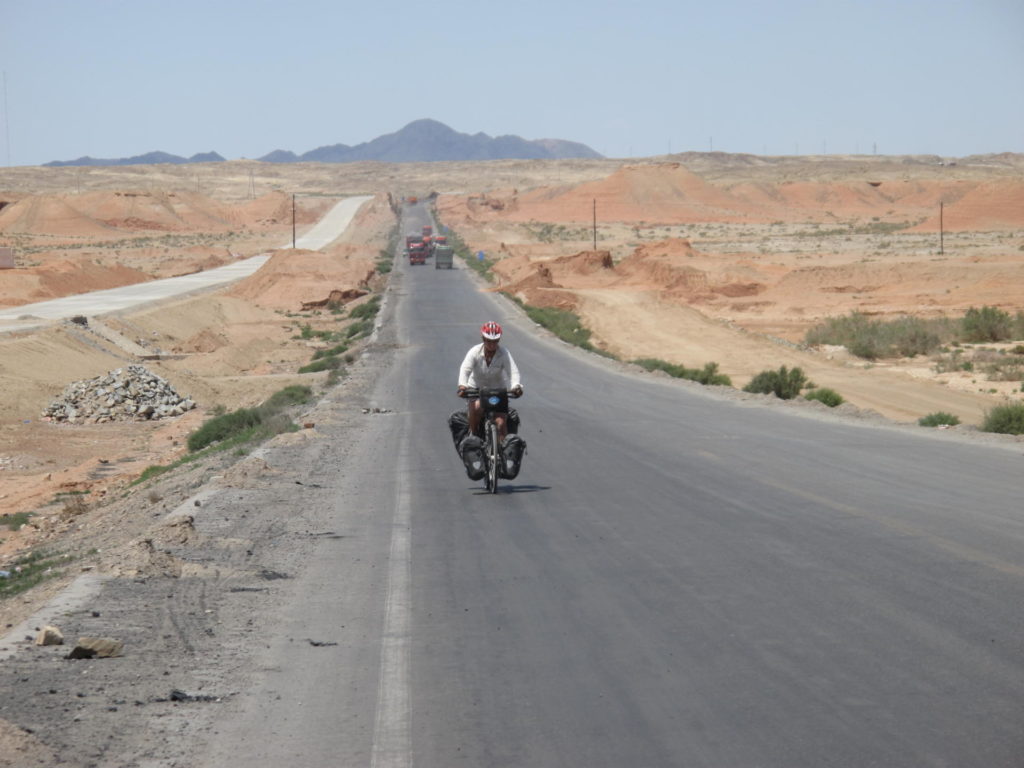
Profile: Sarah Outen
Nationality: British—from England’s smallest county, Rutland.
Age: 26.
Education: University of Oxford, Biological Sciences.
Author of: “A Dip in the Ocean: Rowing Solo Across the Indian,’’ published by Summersdale (2011).
Past adventures: Rowing solo across the Indian Ocean from Australia to Mauritius in 2009 (124 days, 4,000 nautical miles).
Sponsors: Sarah’s title sponsor is Accenture; visit her Website for a list of companies and organizations supporting her journey.
Journey Gems
- Most exciting moment: Meeting a brown bear on the beach in Sakhalin—it was windy, so he couldn’t hear us paddling a few meters off the shore. To be so close to such a beautiful, formidable animal was very special.
- My favorite story: Gao Yua Guang, a 22-year-old Chinese man asked to join me on a whim to cycle 4,000 km. across his country to Beijing. He had never cycled more than 10 km. before and didn’t even own a bike. Thirty-five days later, we pedaled into the capital together after a 200-km. day. He had turned from shy guy into an athlete, keen for more adventures. It was a wonderful trove of memories and an inspiration.
- Longest ride: 266 km. through the night on Sakhalin, battered by wind and rain, and much of it on muddy, non-paved roads. It was a beautiful island, but the lack of hard surfaces made it very challenging.
- Scariest moments: Kazakhstan—a herd of cows walked by my tent, trying to munch my breakfast and gear. They also scared a snake which slithered out of the brush toward my bike and looped itself through the frame. I didn’t know whether to stop the cows eating my watermelon and tent or do something about the snake.
- The ugly: China’s air quality is not great and the road surfaces through the desert were often very poor—meaning I was permanently covered in grime and dust from the road and traffic. Truck traffic out there was astonishing—Gao and I often cycled past queues 40-km. long, with nose-to-tail traffic hauling coal about the country.
Follow Sarah
Technology has made it possible for Sarah to blog and share her stories from anywhere in the world—including the middle of the ocean. Sarah will be spending the winter in Minakami, but you can follow her this spring when she shoves off from Choshi via www.sarahouten.com, her Twitter (@SarahOuten) or the Outdoor Japan Fan Page at www.facebook.com/japantraveler.




